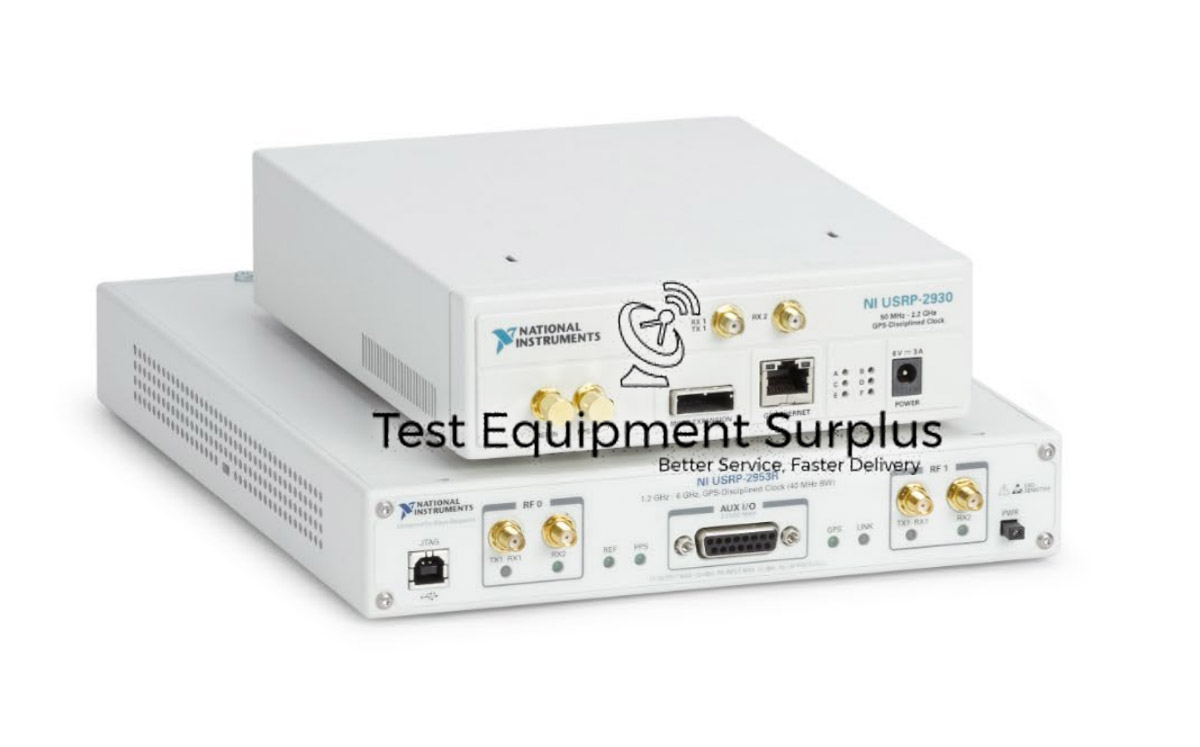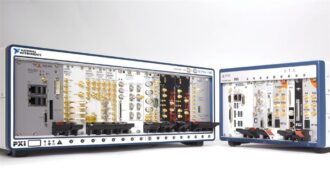Description
The National Instruments USRP-2921 USRP Software-Defined Radio Device, with part number 781907-01, is a versatile device in the NI USRP product series suitable for a wide range of radio frequency applications. This device is designed to support compatible RF frequencies from 2.4 to 2.5 GHz and 4.9 to 5.9 GHz, offering an RF bandwidth of 20 MHz. Connectivity is achieved through Ethernet, facilitating easy integration into various network configurations.
The USRP-2921 features an RF transceiver that includes an Analog-to-Digital converter for the receiver, and a Digital-to-Analog converter for the transmitter, ensuring high-fidelity signal conversion. The transmitter provides precise control with a gain step of 0.5 dB, while the receiver offers a gain step of 2 dB. With its half-duplex channel configuration, the device has one input and one output channel, optimized for applications where simultaneous two-way communication is not required.
Performance is maintained within an optimal noise figure range of 5 dB to 7 dB, ensuring signal clarity. The USRP-2921 is designed to operate reliably within an ambient temperature range of 23°C ± 5°C, making it suitable for a variety of environmental conditions.
| Specification | Detail |
|---|---|
| Product Name | National Instruments USRP-2921 USRP Software-Defined Radio Device |
| Part Number | 781907-01 |
| Manufacturer | National Instruments |
| Product Series | NI USRP |
| Compatible RF Frequencies | 2.4 to 2.5 GHz and 4.9 to 5.9 GHz |
| RF Bandwidth | 20 MHz |
| Connectivity | Ethernet |
| RF Transceiver Converters | Analog-to-Digital (Receiver), Digital-to-Analog (Transmitter) |
| Transmitter Gain Step | 0.5 dB |
| Receiver Gain Step | 2 dB |
| Channel Configuration | One input and one output channel (Half-duplex) |
| Noise Figure | 5 dB to 7 dB |
| Operating Temperature | 23°C ± 5°C |
Question 1: What are the specifications and features of the National Instruments USRP-2921 USRP Software-Defined Radio Device for radio frequency applications?
Answer 1: The National Instruments USRP-2921 Software-Defined Radio Device features an Analog-to-Digital converter for the receiver and a Digital-to-Analog converter for the transmitter, which contribute to its high-fidelity signal conversion by ensuring accurate and precise translation of RF signals to digital form for processing and vice versa, maintaining the integrity and quality of the signal throughout the transmission and reception processes.
Question 2: What is the RF bandwidth of the National Instruments USRP-2921 Software-Defined Radio Device, and how are its transmitter and receiver gain steps configured?
Answer 2: The National Instruments USRP-2921 Software-Defined Radio Device supports frequency ranges of 2.4 to 2.5 GHz and 4.9 to 5.9 GHz; its main features include Ethernet connectivity, an RF transceiver with Analog-to-Digital and Digital-to-Analog converters, a half-duplex channel configuration, and an operating temperature range of 23°C ± 5°C.
Question 3: What are the key features and specifications of the National Instruments USRP-2921 Software-Defined Radio Device, including its supported RF frequency ranges, bandwidth, connectivity, and performance characteristics?
Answer 3: The National Instruments USRP-2921 USRP Software-Defined Radio Device for radio frequency applications is designed to support RF frequencies from 2.4 to 2.5 GHz and 4.9 to 5.9 GHz, with an RF bandwidth of 20 MHz, and features an RF transceiver with an Analog-to-Digital converter for the receiver and a Digital-to-Analog converter for the transmitter. It offers a gain step of 0.5 dB for the transmitter and
Question 4: What are the features of the Analog-to-Digital and Digital-to-Analog converters in the National Instruments USRP-2921 Software-Defined Radio Device, and how do they contribute to its signal conversion fidelity?
Answer 4: The National Instruments USRP-2921 Software-Defined Radio Device, part number 781907-01, supports RF frequencies from 2.4 to 2.5 GHz and 4.9 to 5.9 GHz with a 20 MHz RF bandwidth, offers Ethernet connectivity, features an RF transceiver with high-fidelity Analog-to-Digital and Digital-to-Analog converters, provides precise transmitter gain control in 0.5 dB steps and receiver gain control in 2 dB steps
Question 5: What are the frequency ranges supported by the National Instruments USRP-2921 Software-Defined Radio Device, and what are its main features in terms of connectivity, RF transceiver components, channel configuration, and operating temperature range?
Answer 5: The RF bandwidth of the National Instruments USRP-2921 Software-Defined Radio Device is 20 MHz, and its transmitter and receiver gain steps are configured at 0.5 dB and 2 dB, respectively.



